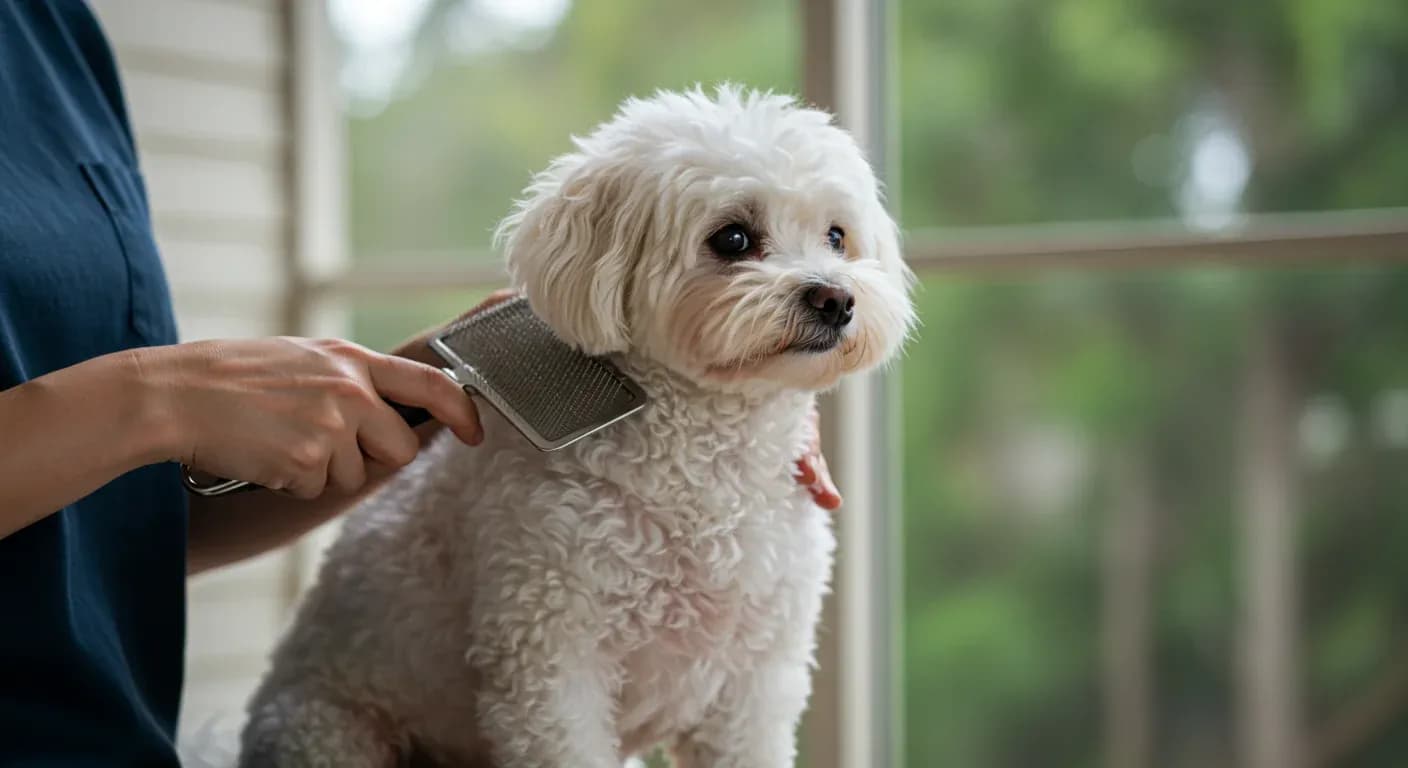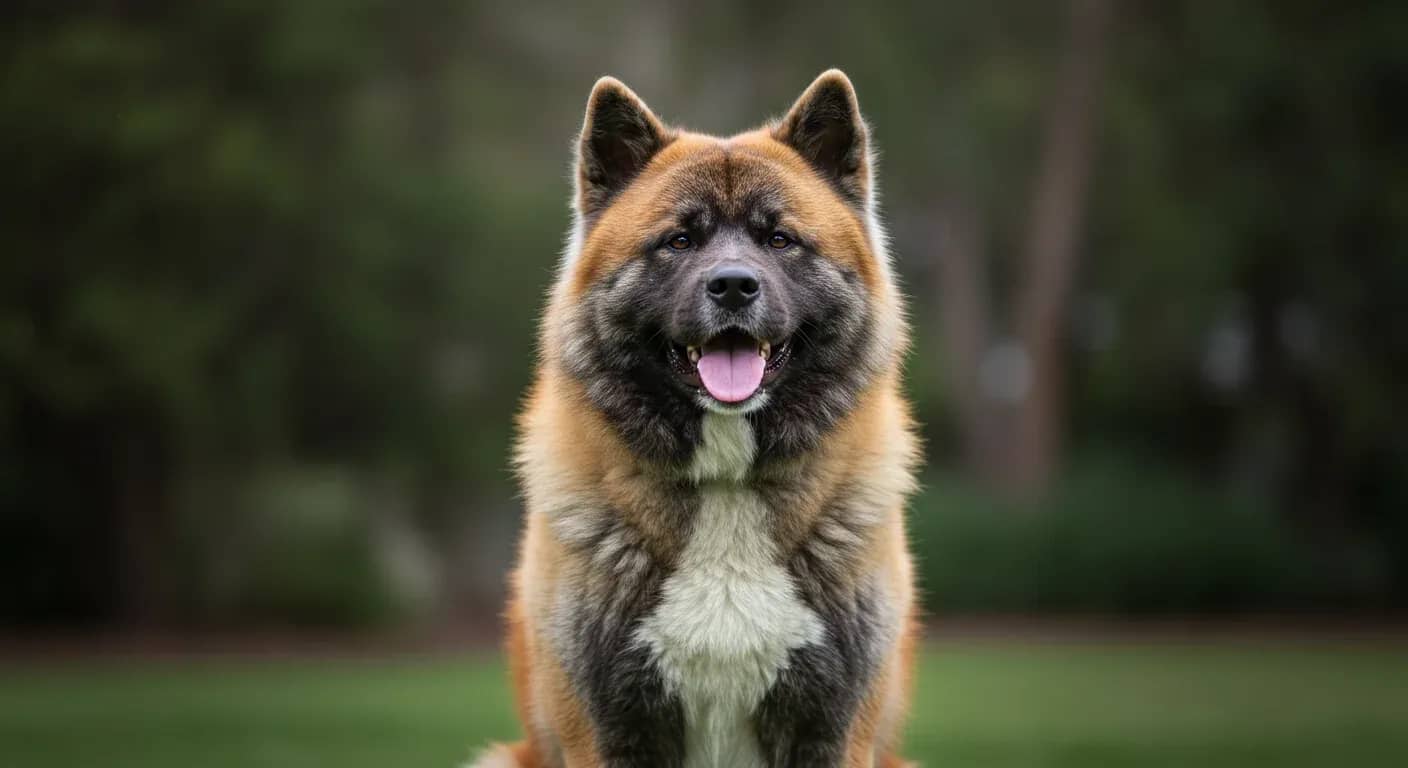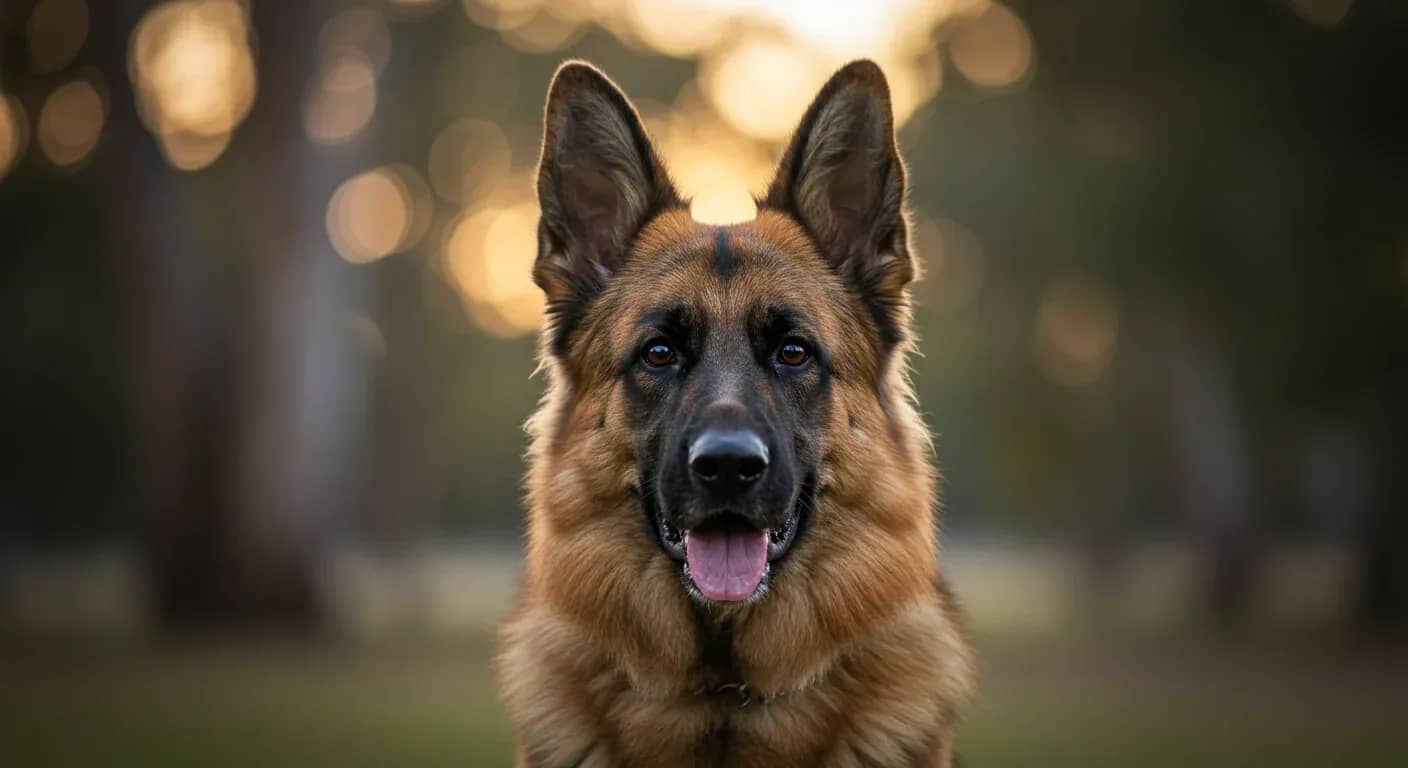At a glance
- Long pin stainless steel brushes with rounded tips are the gold standard for reaching deep into the Bichon's double coat
- Daily brushing prevents matting and requires a three-tool approach: pin brush, slicker brush, and metal comb
- Always brush before bathing, as water can tighten existing mats and make them nearly impossible to remove
- Professional groomers recommend switching to adult brushing tools around 4 months of age
Why your Bichon needs specialised brushing tools
You might notice that standard pet brushes barely make a dent in your Bichon's fluffy coat. There's a good reason for this struggle. These dogs have a unique double coat structure that demands specific tools to maintain properly.
The outer layer consists of soft, curly hair that tangles easily, while underneath lies a dense, woolly undercoat that traps everything from dirt to moisture to dead hair. Most regular brushes simply can't penetrate deep enough to reach this undercoat, leaving you brushing only the surface while mats form silently beneath.
Professional groomers see the consequences of inadequate brushing tools regularly. Incomplete detangling leads to skin irritation, severe matting that requires shaving, and increased risk of skin infections. The good news is that choosing the right brush makes all the difference between a manageable grooming routine and a daily battle.
The essential brush for every Bichon owner

After extensive testing by professional groomers, one tool consistently outperforms all others: the long pin stainless steel brush with rounded tips. These brushes feature pins approximately 2.5 centimetres long, allowing them to reach deep into the undercoat without scratching or irritating the skin.
The stainless steel construction matters more than you might expect. These pins maintain their shape over time and glide through the coat more smoothly than cheaper alternatives. The rounded tips are crucial for preventing skin damage during daily brushing sessions.
Professional groomers particularly recommend the Chris Christensen Oval Pin Brush in medium or large sizes, typically costing between $25 and $35. For gentler daily maintenance, the KONG ZoomGroom offers a softer alternative, while the FURminator deShedding Pin Brush works well during heavier shedding periods.
Building your complete grooming toolkit
While the pin brush forms the foundation of your grooming routine, two additional tools complete the essential kit. A soft slicker brush becomes important once your dog reaches about 4 months of age. This tool excels at lifting away undercoat hairs and removing surface tangles, particularly after bathing or before professional clipping.
The Chris Christensen Small Slicker Brush and Hertzko Self-Cleaning Slicker Brush both receive strong recommendations from professional groomers, with prices ranging from $10 to $25.
Your final essential tool is a metal comb, specifically a coarse-medium greyhound-type comb. This serves as your quality control check after brushing. Professional groomers emphasise that the comb must glide effortlessly through the coat all the way to the skin. If it catches on anything, you've found a spot that needs more attention with your brushes.
Mastering the daily brushing routine

Daily brushing isn't negotiable with these dogs, but the technique matters as much as frequency. Start each session with your long pin brush, working systematically through the coat to reach the undercoat. Follow with the slicker brush for any surface tangles, then finish with your metal comb to ensure you haven't missed anything.
Pay particular attention to high-friction areas where mats form most quickly: the armpits, behind the ears, under the legs, and around the collar area. These spots often need extra passes with your pin brush to stay tangle-free.
Many owners find success with short, five-minute sessions twice daily rather than one longer grooming period. This approach keeps your dog more comfortable and prevents the coat from becoming overwhelming between sessions.
Pre-bath brushing saves hours of work
Have you ever noticed how much harder it becomes to brush out tangles after your dog gets wet? Water tightens existing mats, transforming minor tangles into solid knots that may require professional removal. This is why experienced groomers always brush thoroughly before any bath.
A simple once-over with your slicker brush before bathing can prevent hours of post-bath detangling work. Focus especially on areas that tend to mat easily, and don't skip this step even if your dog looks relatively tangle-free.
After bathing, gently towel dry before beginning your brushing routine. Work in downward strokes with the slicker brush, then blow-dry while brushing in every direction to pull the fur straight. Finish with your metal comb to ensure the coat is completely smooth and tangle-free.
Recognising and addressing common coat problems
Even with proper tools and technique, you'll occasionally encounter challenges. Matting typically develops in predictable patterns, starting in high-friction areas and spreading if left untreated. When you find a mat, use your metal comb to gently tease it apart, working from the outside edges toward the centre.
Skin irritation often indicates you're using brushes with sharp or rough pins. Always choose tools with rounded tips and check your dog's skin regularly during grooming sessions. Any persistent redness, sores, or excessive scratching warrants a veterinary consultation to rule out allergies or infections.
Seasonal shedding can overwhelm even the best brushing routine. During these periods, increase your brushing frequency and consider whether your dog's diet includes adequate omega-3 fatty acids, which support healthy coat condition.
When to seek professional help
Sometimes the best tool is knowing when to call in expert assistance. Severe matting that doesn't respond to gentle combing often requires professional removal to avoid injuring your dog's skin. Professional groomers have specialised tools and techniques for safely addressing problem areas.
Additionally, if you notice persistent skin issues, unusual hair loss, or if your dog becomes increasingly resistant to grooming despite your best efforts, a consultation with your veterinarian or a certified groomer can identify underlying issues and get you back on track.
Regular professional grooming every 6 to 8 weeks, combined with your daily home maintenance routine, keeps most dogs comfortable and their coats healthy. Think of professional grooming as preventive maintenance rather than crisis intervention.



